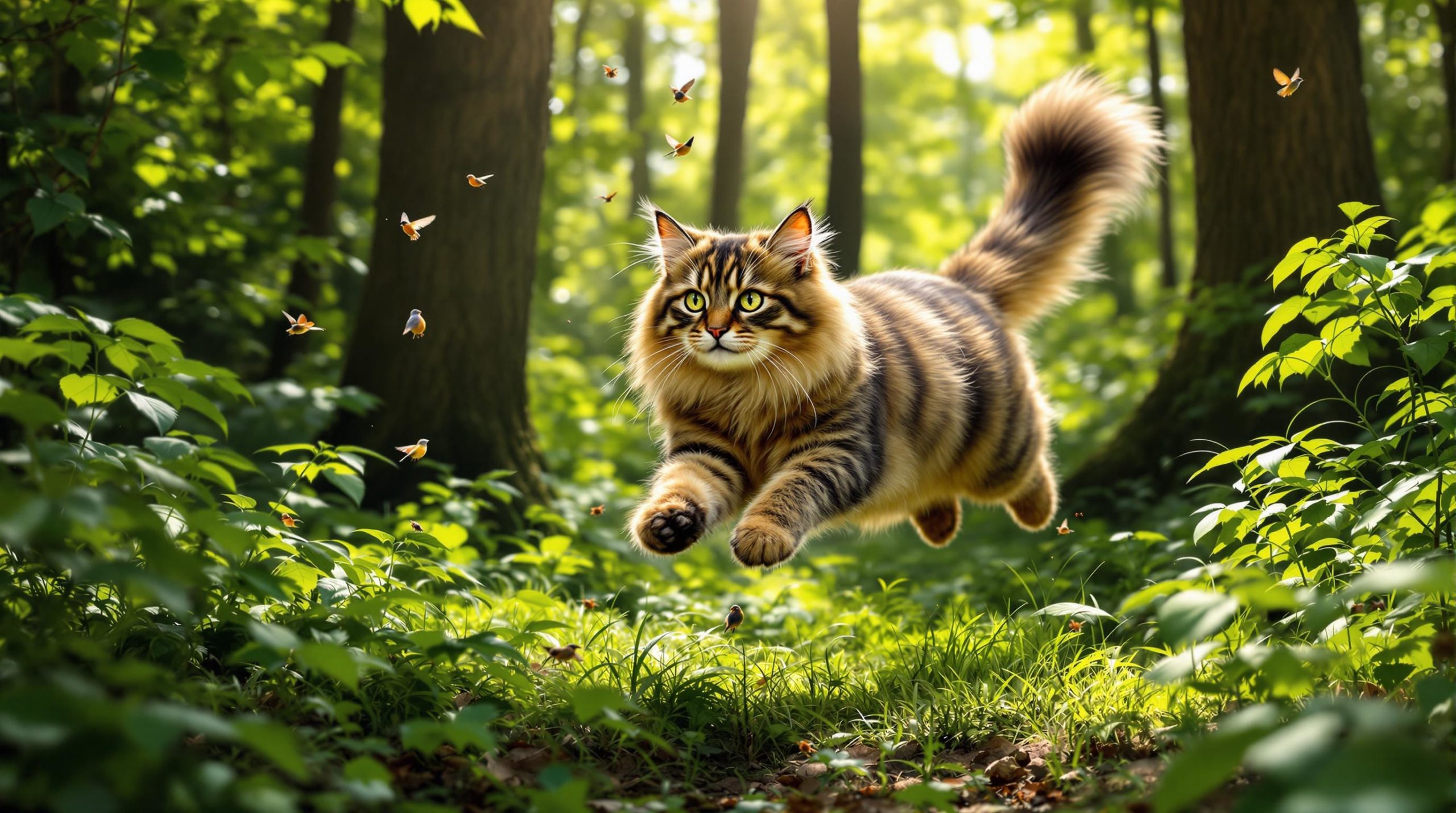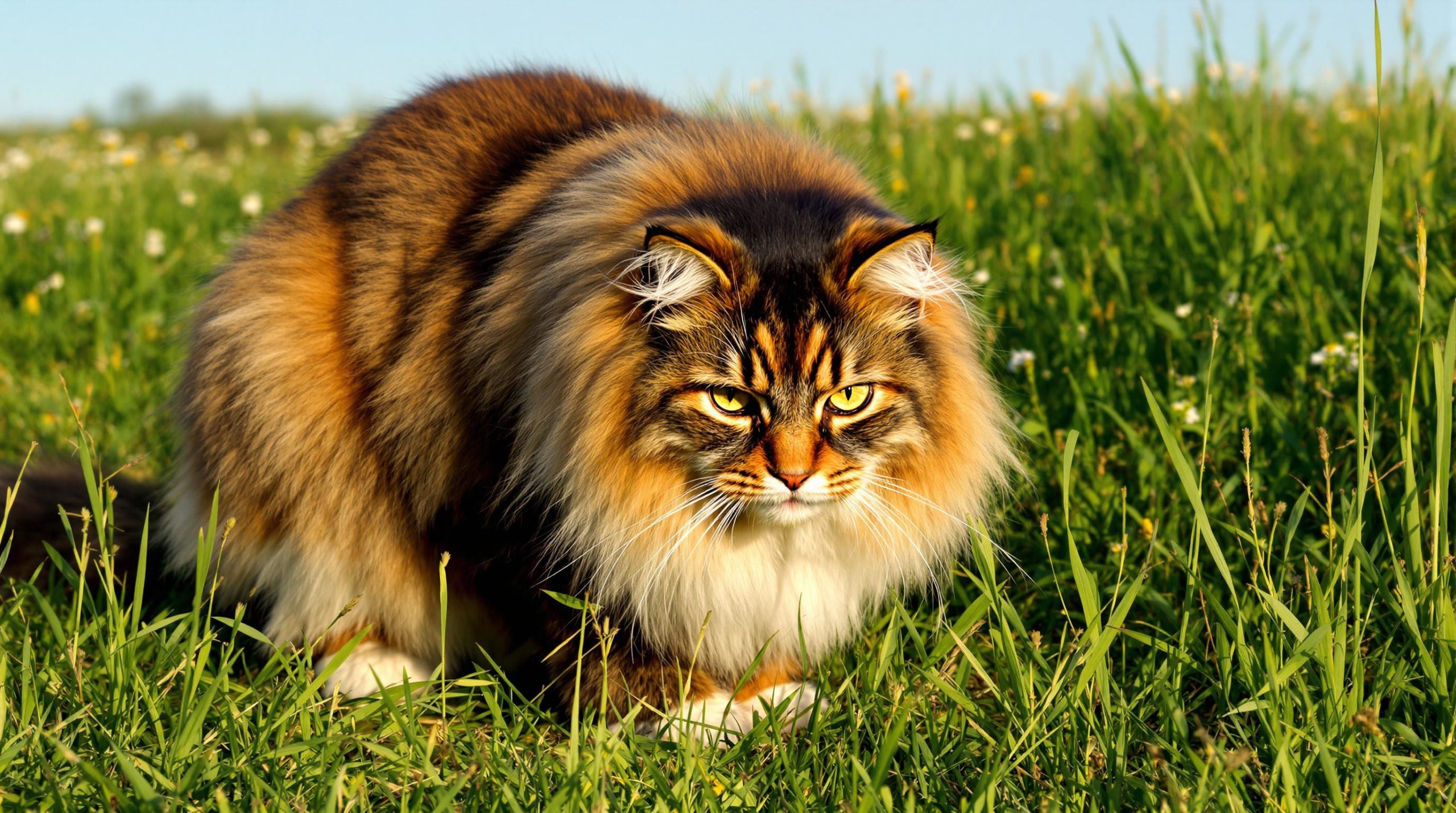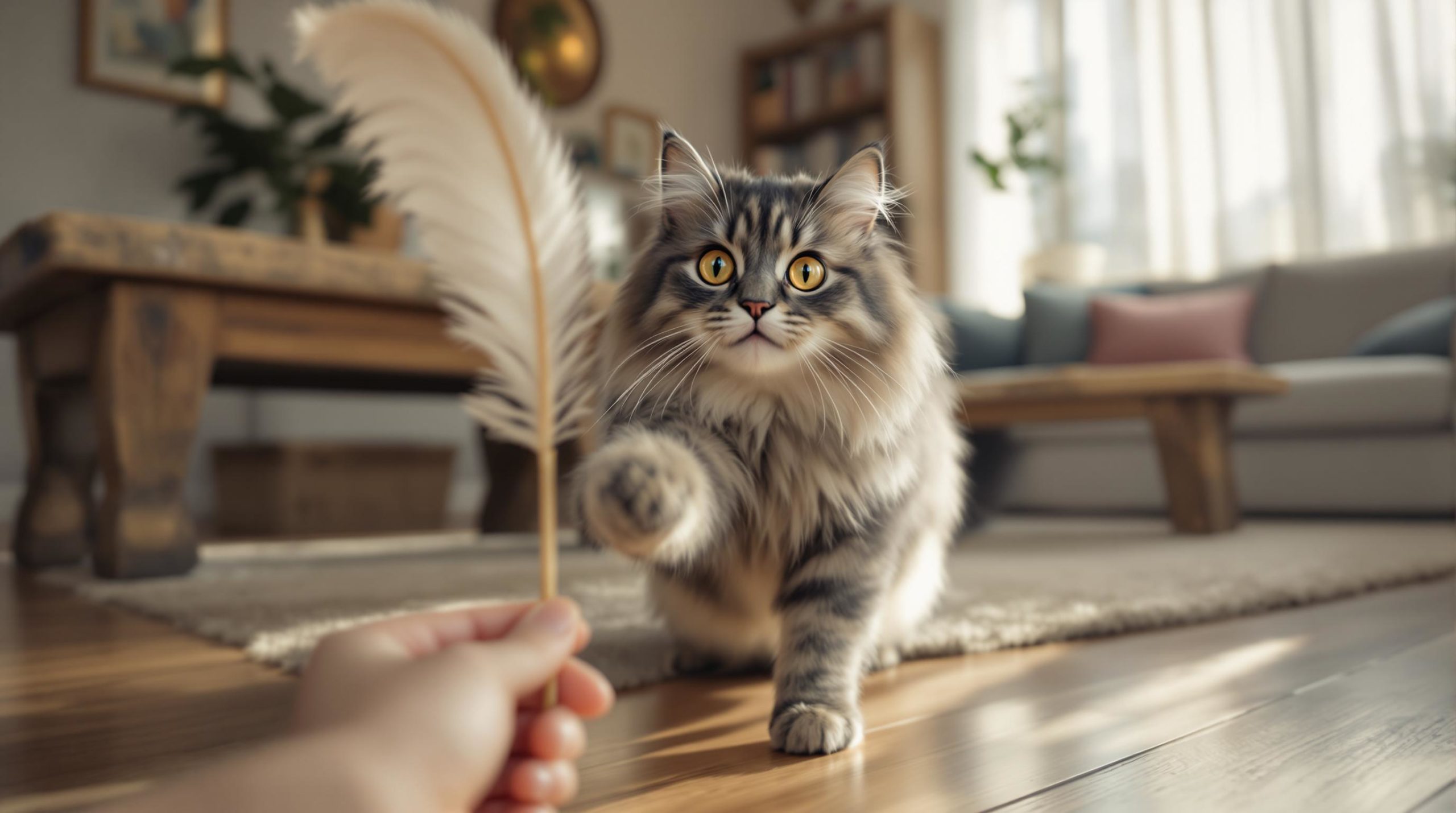Exploring the hunting prowess of Maine Coon cats

Does your Maine Coon suddenly freeze, ears perked, ready to pounce on a dust mote? That’s not just play—it’s a glimpse into the rich hunting heritage of one of the largest and most agile cat breeds around. Known commonly as gentle giants with luxurious coats, Maine Coons are also phenomenal predators with a hunting prowess that continues to shape their behavior even today. From their powerful physiques to their strategic hunting techniques, these cats exhibit a blend of natural instincts and learned skill that sets them apart in the feline world.
Understanding the hunting abilities of Maine Coons not only highlights their role as natural pest controllers but also helps owners provide an enriched environment where these instincts can thrive safely. Whether it’s stalking a feather wand indoors or silently creeping after a backyard bird, the Maine Coon’s hunting drive is both impressive and essential to their well-being.
Physical Attributes That Make Maine Coon Cats Exceptional Hunters
The Maine Coon’s hunting skills arise from several unique physical characteristics that are finely tuned for predation. This powerful feline’s body structure enables remarkable agility, strength, and precision in the wild—and inside the home.
Muscular Build and Size Advantage
Among the largest domestic cat breeds, Maine Coons boast the muscular build necessary for overpowering prey. Males typically weigh between 18-22 lbs (8.2-10 kg), while females range from 15-18 lbs (6.8-8.2 kg). This size advantage enhances their stalking and grappling capabilities, allowing them to pursue and hold onto prey heavier than what smaller cats could manage.
Such strength is matched with endurance. They can sustain long chases or wait patiently for the perfect moment to strike. This endurance has roots in their history as barn cats, where controlling rodent populations meant not just a quick attack but persistent hunting efforts.
Long Limbs and Agile Movement
The breed’s defining long legs—especially their powerful hind legs—equip Maine Coons with exceptional leaping skills. These limbs grant them the ability to pounce accurately from surprising angles and silently navigate different types of terrain.
- Silent movement thanks to large, padded paws covered with fur (sometimes known as “snowshoe”-like).
- Enhanced grip while chasing prey over rocks, grass, or slippery surfaces.
- Ability to reach high vantage points for ambushes or quick escapes.
This combination of limb strength and stealth is essential for ambush-style attacks, a hallmark of the Maine Coon’s hunting style.
Keen Sensory Adaptations
Effective hunting also hinges on superior senses. Maine Coons have:
- Large, wide-set eyes providing excellent depth perception and enhanced night vision—key for spotting movement in dim light.
- Distinctive tufted ears that enhance directional hearing, capturing faint rustling or the subtle flutter of a bird’s wing.
Their acute hearing and visual prowess allow them to hunt prey both indoors and in the wild with remarkable precision, making them adept feline hunters ready for any “Coon Quest” or “Hunt Tail”.
| Physical Attribute | Benefit for Hunting | Example in Action |
|---|---|---|
| Large Muscular Build | Strength to overpower and carry larger prey | Pouncing on a rat in the barn |
| Long Hind Legs | Exceptional leaping & agility for surprise attacks | Leaping silently onto a fence to ambush birds |
| Tufted Ears | Enhanced hearing for detecting prey movement | Pinpointing a mouse rustling in the grass |
| Large, Padded Paws with Fur | Silent walking & better traction on rough terrain | Tracking a lizard across leaves without noise |
Learning how these physical gifts integrate with their hunting behavior can help owners appreciate the Bourne Attributes of their Maine Coon and adjust their environment accordingly.

Understanding the Natural Hunting Instincts of Maine Coon Cats
Maine Coons aren’t just hunted by nature in form—they’re hunters at heart. Their instincts have been honed over centuries, originally shaped by survival needs in the harsh climates of Northeastern US farmlands.
Survival and Working Heritage
This breed’s roots link to the sturdy, weather-resilient working cats prized for controlling pests on farms and ships. As intentional “Maine Trappers,” these cats needed to be savvy hunters to secure food and defend homes from unwelcome rodents and birds. Such natural selection favored those with a sharp “Feline Hunter” drive and prowess.
Even today, many domesticated Maine Coons retain a powerful prey drive. This manifests in:
- Stalking toys or shadows under furniture.
- Chasing insects with precision.
- Ambushing birds or critters visible through windows.
Behavioral Patterns that Mirror Wild Hunting
Typical hunting behavior includes a calculated approach—patience, stealth, and strategic movement are core to their success.
- Stalking: Slow, deliberate movement to remain undetected.
- Watching and waiting: Maine Coons will freeze and observe prey for extended periods.
- Sudden pounce: An explosive leap using hind legs enhanced by their long limbs.
- Carrying prey: Retrieving caught items persistently, much like their ancestors who brought prey back to their owners or kittens.
Understanding these instincts through frameworks like the “Pounce Pro” style helps owners engage with their feline companions without suppressing natural behaviors. This balance is key to nurturing emotional and physical health.
How Intelligence Shapes Hunting
Maine Coons are renowned for their intelligence—their ability to problem-solve, learn from experience, and adapt to new challenges adds layers to their hunting strategy. They often:
- Use household items or furniture as cover.
- Wait for distractions or timing that offers an edge over prey.
- Engage in complex play mimicking real prey capture.
This cleverness differentiates them from typical domestic cats and underscores the importance of an enriched environment where their skills like “Cat Tracker” can stay sharp.
Popular Prey Types and What Maine Coons Prefer to Hunt
Maine Coons exhibit a broad prey repertoire thanks to their adaptability and physical traits that allow them to thrive inside or outside. Their natural instincts tap into a variety of targets which range from tiny insects to larger mammals.
Rodents: The Classic Prey
Mice, rats, and voles are beloved prey for Maine Coons, especially those spending time outdoors. These fast, darting creatures activate the cat’s chase reflex and are perfect targets to practice their stalking and pouncing prowess.
Reasons rodents are favorites for “Maine Trappers”:
- Abundant and easily accessible in barns, homes, and yards.
- Size matches the cat’s ability to overpower and carry prey.
- Movement and sounds stimulate the hunter’s senses intensely.
Birds: Challenging and Rewarding Targets
The combination of flight and sudden movement attracts Maine Coons’ wild side. Their strong hind legs and climbing skills make catching low-flying or perched birds a thrilling challenge.
Despite this instinct, many owners take measures to protect local wildlife by using bells or reflective collars to minimize bird casualties.
Insects and Bugs: The Indoor “Catch”
Even indoor Maine Coons enjoy hunting insects such as flies, moths, and beetles. Their incredible eyesight and nimble paws make bug hunting a fun and important source of stimulation.
- Fluttering movements entice the natural chase response.
- Small spaces allow “Feline Adventure” without risk.
- Playful practice of real hunting techniques keeps the mind sharp.
Unusual and Unexpected “Prey”
Occasionally, Maine Coons expand their hunting repertoire to household objects — a testament to their playful and curious nature.
- Socks, hair ties, and crumpled paper often become “caught” treasures.
- Knots or moved items may spark stalking and pouncing habits.
- Such behavior suggests the need for more engaging play opportunities to channel these instincts productively.
| Prey Type | Preferred Environment | Hunting Behavior |
|---|---|---|
| Rodents (Mice, Rats) | Barns, Gardens, Outdoors | Stealth stalking, quick pounce, carry prey |
| Birds | Trees, Fences, Outdoor spaces | Ambush, leap, chase, use climbing |
| Insects | Indoor, Windowsills, Lights | Chase, bat at, wait, catch |
| Household Objects | Indoor play areas | Stalk, pounce, carry, chew |
Recognizing the diversity of their prey preferences clarifies why interactive play is essential, even for indoor-only cats, to harness the full range of their hunting skills.

Safe Ways to Encourage and Channel Maine Coon Hunting Instincts
While these majestic cats carry a natural “Claw & Paw” urge to hunt, responsible owners must balance this by providing sufficient enrichment and safe outlets.
Interactive Play Sessions
Using toys like feather wands, laser pointers, and “Pounce Pro”-style interactive tools imitates the unpredictable movements of prey. To maximize engagement:
- Move toys with stop-start patterns mimicking real animal movements.
- Hide toys behind furniture to encourage stalking.
- Rotate toys regularly to prevent boredom.
Environmental Enrichment and Puzzle Feeders
Food puzzles and slow feeders double as hunting practice by encouraging cats to “work” for their meals. This mimics the effort of hunting and rewards patience and problem-solving.
- Promotes mental stimulation and reduces destructive behavior.
- Establishes a healthy eating routine linked to natural instincts.
- Supports the “Cat Tracker” skill set by engaging the sense of challenge.
Harness Training and Catio Exploration
For owners interested in outdoor access, walking Maine Coons safely on harnesses or introducing “catios” offers controlled wildlife watching and scent exploration without harming local fauna.
- Reduces risks associated with free-roaming, such as traffic or predators.
- Maintains the cat’s connection to nature and the outdoors.
- Provides mental and physical enrichment in a secure space.
Behavioral Training and Routine
Clicker training and structured playtime teach Maine Coons to focus and expend energy constructively, lowering stress and frustration that sometimes fuel unwanted hunting behaviors indoors.
| Enrichment Strategy | Benefits | Recommended Tools/Practices |
|---|---|---|
| Interactive Play | Simulates real hunting, physical exercise | Feather wands, laser pointers, toys |
| Food Puzzles | Mental stimulation, encourages problem-solving | Puzzle feeders, slow feeders |
| Outdoor Exploration | Safe connection to nature, sensory enrichment | Harness, catio enclosures |
| Behavioral Training | Improves focus, reduces destructive hunting indoors | Clicker training, positive reinforcement |
Special Tips for Raising Maine Coon Kittens with Healthy Hunting Skills
Building strong hunting instincts in kittens sets the stage for a balanced, happy adult cat. Early socialization and play mimic the “Feline Adventure” that shapes confident hunters.
Introducing Toys and Play Early
Between 8 and 12 weeks, kittens should engage with interactive hunting toys that encourage stalking, pouncing, and batting. Examples include feather wands and small motorized toys replicating prey.
- Rotate toys to maintain interest and challenge.
- Schedule play before mealtimes to replicate the “hunt, catch, kill, eat” cycle.
- Encourage gentle handling to reduce aggressive play biting.
Using Praise and Positive Reinforcement
Recognizing calm post-hunt behavior fosters rest and relaxation, preventing hyperactivity and destructive tendencies. Rewarding good behavior strengthens the desired routine.
Ensuring Environment Enrichment
Kittens raised with ample safe climbing spaces, hiding spots, and sensory stimulation adapt better to their instinctual needs. This foundation builds the intelligence and patience Maine Coons are famous for.
| Kitten Age | Hunting Development Activity | Benefits |
|---|---|---|
| 8-12 weeks | Introduce interactive toys | Enhances stalking and pouncing skills |
| 12-20 weeks | Rotate toys, structured play | Maintains interest, builds endurance |
| Beyond 20 weeks | Combine play with positive reinforcement | Encourages gentle play, reduces aggression |
With these strategies, owners can guide Maine Coon kittens into becoming confident hunters who enjoy satisfying their natural instincts without threatening the safety of household items or other pets.
Frequently Asked Questions About Maine Coon Hunting Skills
- Do all Maine Coons have a strong hunting instinct?
While most Maine Coons retain strong prey drives, individual personalities vary. Some may prefer lounging, but even these cats often exhibit hunting behaviors during play. - Is it safe to let my Maine Coon hunt outdoors?
Unsupervised outdoor roaming carries risks including traffic, predators, and theft. Secure environments like catios or supervised walks are safer alternatives. - How can I prevent my Maine Coon from hunting local birds?
Using reflective collars or bells helps reduce bird hunting. Providing abundant indoor stimulation and outdoor catios also decreases the desire to hunt wild birds. - Are hunting behaviors harmful to indoor cats?
Not at all—hunting play is crucial for mental and physical health. Without outlets for these instincts, cats may develop stress or destructive habits. - Can hunting instincts cause aggressive behavior?
Hunting instincts themselves are natural and not synonymous with aggression. Proper play and early training reduce unwanted biting or scratching associated with redirected hunting energy.